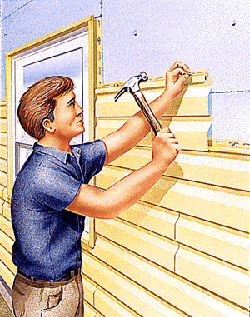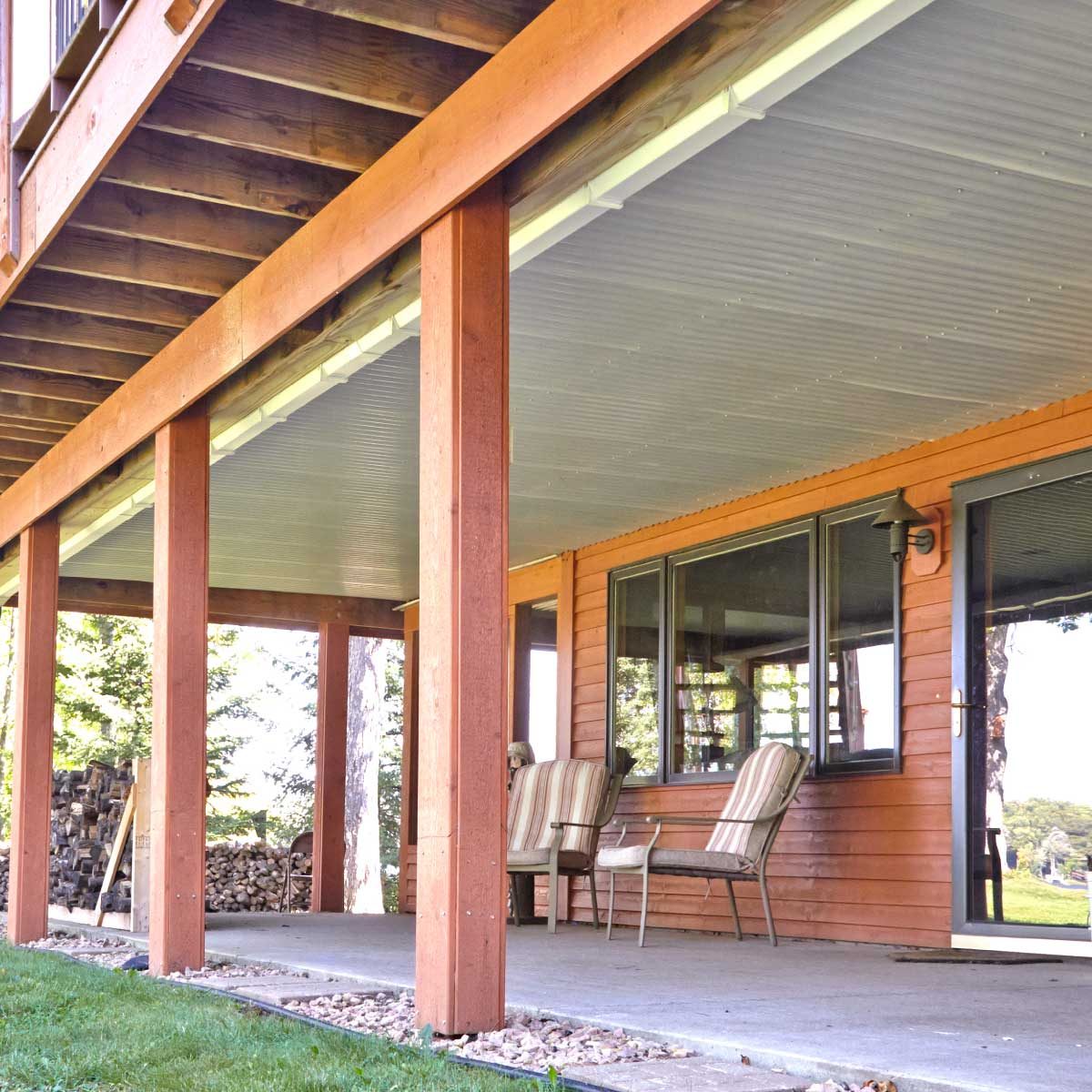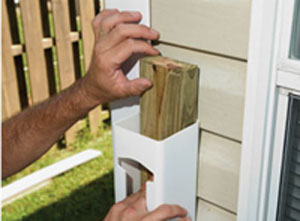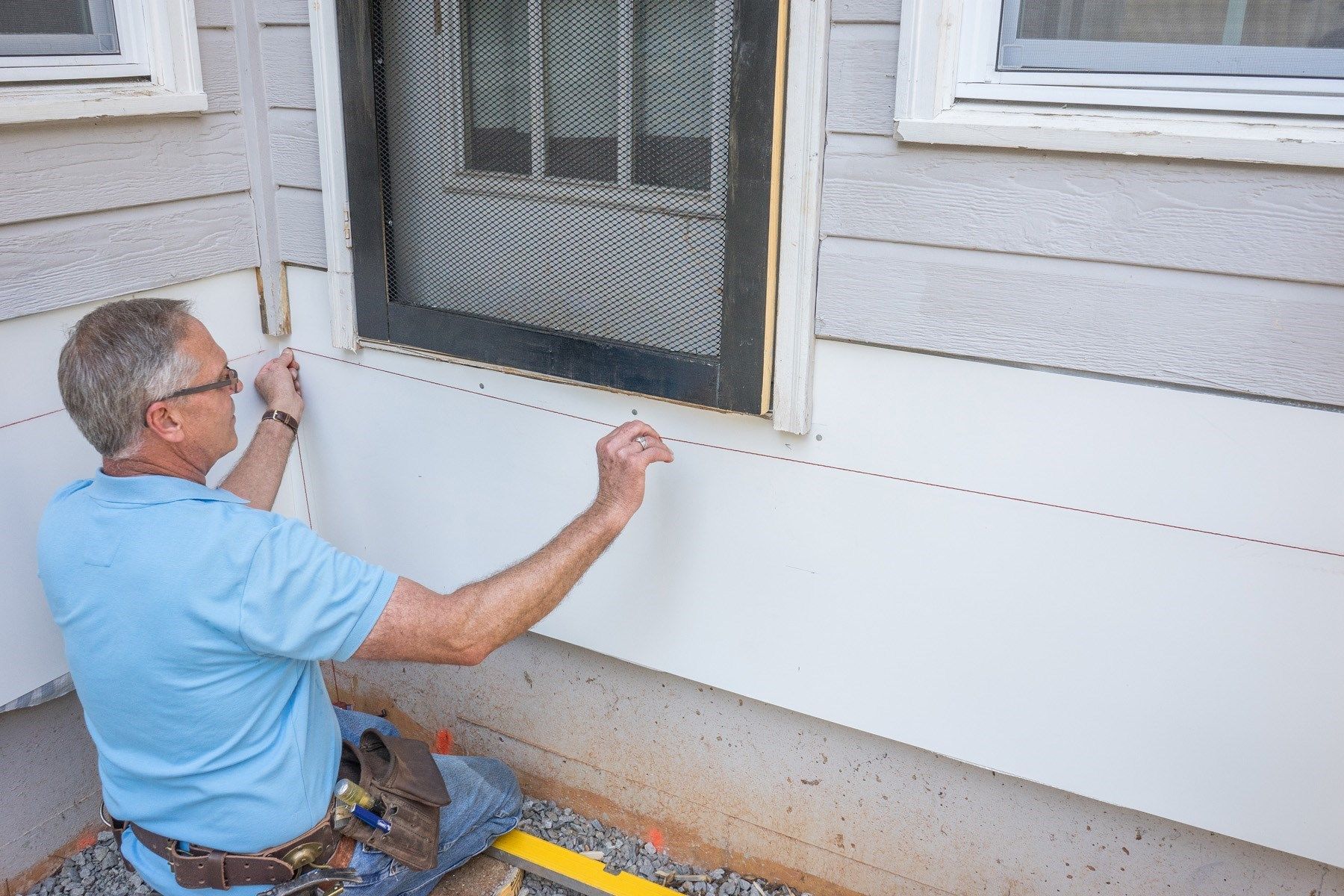Deck joists are typically attached to the face of the ledger board with joist hangers after the ledger board is installed. Start by making an outline on the siding where you want to position the ledger board.
Removing the siding and installing the ledger directly gives you an undeniably stronger connection at the risk of moisture damage if not properly flashed and you pretty much have to re side the house if the deck is ever removed.

How to attach a deck to a house with vinyl siding.
Make the outline large enough to include space for the deck boards on top the ledger and any trim boards on the sides.
The assembly kit might also have vinyl covers for these screws.
The ledger board is a horizontal framing member usually two by 10 or two by 12 lumber that supports one side of a deck and attaches flat to the wall of a house after removing a section of siding.
Then cut away the siding.
Nail undersill trim j channel will also work over the bottom cut using 11 gauge aluminum nails.
Snap them in place if available.
The cutout needs to be slightly longer than 6 inches and as wide as the bracket to allow the bracket to fit through easily.
Step 2 cut a rectangle in the vinyl siding long enough for the angle bracket to fit through with vinyl siding snips.
Locate the tabs on each side of the rail bracket.
Drill a pilot hole through the tabs.
Insert screws from the brackets assembly kit through the holes in the tabs to attach both sides of the bottom rail to the bracket.
Measure and mark the spot where the bottom of the railing will attach to the vinyl siding with a pencil.








:max_bytes(150000):strip_icc()/7706486978_b66cacecf5_o-56a4a28e3df78cf772835c2c.jpg)








No comments:
Post a Comment